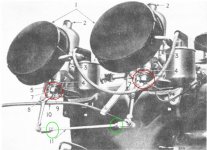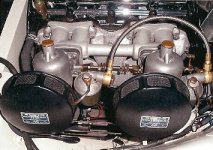M
Member 10617
Guest
Guest
Offline
Can someone show me a photo of the "choke linkage nuts." (Or point them out in Moss catalog or Practical Hints).
This is probably so simple a question that the manuals don't bother to label them. I think I see them on p. 35 of Practical Hints, but they are not identified as such. I could guess, but I'd rather not.
Reason being is that I need to loosen them to adjust the mixture.
This is probably so simple a question that the manuals don't bother to label them. I think I see them on p. 35 of Practical Hints, but they are not identified as such. I could guess, but I'd rather not.
Reason being is that I need to loosen them to adjust the mixture.

 Hi Guest!
Hi Guest!

 smilie in place of the real @
smilie in place of the real @
 Pretty Please - add it to our Events forum(s) and add to the calendar! >>
Pretty Please - add it to our Events forum(s) and add to the calendar! >> 

